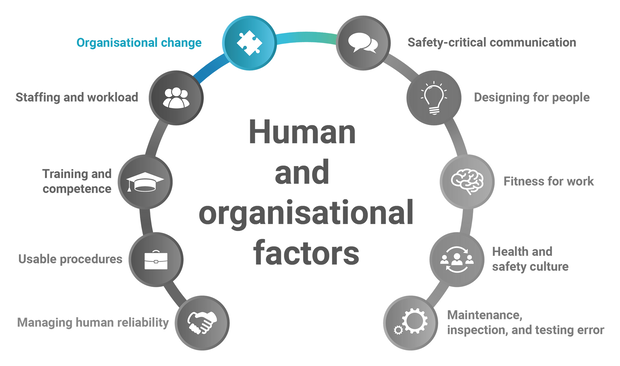
What is organisational change?
Change is normal and unavoidable in any organisation. Organisational change refers to any changes to business processes, organisational structure, staffing levels or culture within a company. Types of organisational change include:
- restructuring teams, groups or departments
- changing administrative arrangements (e.g. working hours, methods of training, relocation of staff)
- introduction of new technology
- relocation of offices and expertise
- changes to roles and responsibilities
- reducing numbers of staff (downsizing), which is often accompanied by:
- outsourcing
- flexible working or multi-skilling
- combining jobs
- removing layers of management.
Managing change
Changes to the organisation may increase levels of uncertainty among the workforce and uncertainty can increase stress levels. It is therefore important to manage the change effectively so that increased stress levels do not negatively impact performance.
Managing change is essential to avoid increasing the likelihood of human error occurring as a result of the change.
Organisations should have systems in place for introducing new or modifying existing hardware such as plant, tools, materials and machines. They should also have adequate systems for making changes to the organisation and the way people work.
What are the impacts of poorly managed change?
Changes to the physical working environment can introduce new risks and hazards, which is why a risk assessment should be conducted before any changes are made.
Risk assessments should cover the identification and mitigation of physical risks and hazards. They should also address risks and hazards that result from the interaction of the workforce and the changed environment.
The amount of behavioural change required to support changes to procedures should be assessed to determine how much the workforce will be impacted by the proposed change. The more change required of people, the more the likelihood of error increases.
Checklist: Implementing organisational change
- Has the change been planned in a thorough, systematic and realistic way?
- Has a risk assessment been completed that considers risk arising from both the change itself and from the change process?
- Have personnel who will be impacted by the change been involved in risk assessments and change reviews?
- Have training and competency requirements been reassessed where necessary?
- Has change been phased in, where possible? Too many simultaneous changes may result in inadequate attention to some or all risks.
- Have the potential negative effects on health and safety (e.g. losing skills, overloading workers, losing control of contractors) been considered?
- Are there measures in place to counteract any negative consequences (e.g. increased workforce stress)?
- Are there enough resources and expertise to manage the transition from the existing to new arrangement?
- Can planned changes be modified as needed?
- Have those affected by the change been consulted with prior to, during and after, to allow them to raise their opinions, concerns and suggestions?
- Is the change properly completed? If so, have the effects been evaluated (e.g. conducting interviews or discussions, encouraging operators to keep records of issues)?
- Have written records of the change process and lessons learned been kept to apply to future organisational change?
- Have legal requirements been met, both during and on completion of the changes?
Resources
| What is change management and why is it important? | This webpage provides information on minimising harm by implementing a structured change management process that includes consultation with workers for significant organisational changes. |

